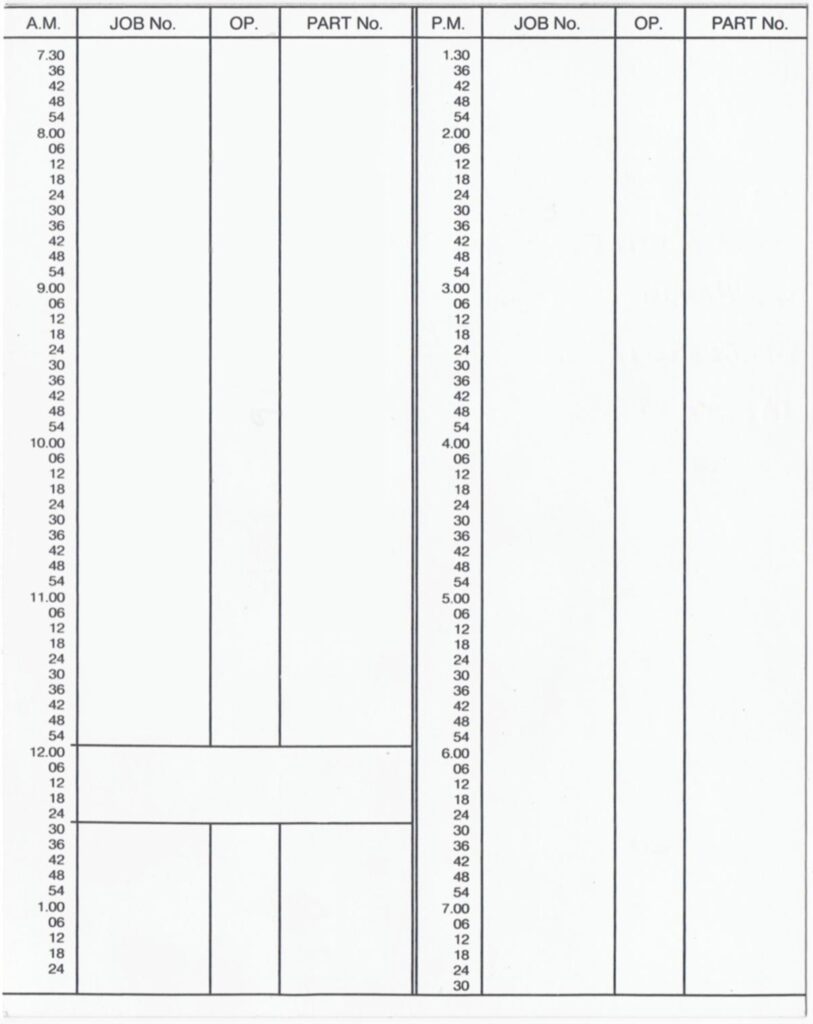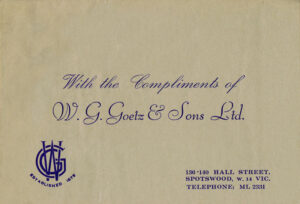Manila envelope for machine parts list and instructions. 304mm x 254mm
Click image for larger view
Generic card, 90 x 57 mm W. G. Goetz & Sons Ltd., showing what appears to be a closing machine. If any one knows the model, please contact us!
Facsimile transmission has been around in some form since Scottish inventor Alexander Bain created a rudimentary fax device he called the ‘Electric Printing Telegraph’ in 1843. Xerox Corporation introduced the first commercialised version of what is regarded as the the modern fax machine in 1964. In 1980 a standard fax communication protocol called G3 was adopted by the International Telecommunications Union including fax manufacturers, which saw fax uptake rates soar as prices dropped – in 1982 a fax machine could cost $20,000!
Despite the fax’s huge popularity before email came along (bringing with it in 1990 the first incidence of email spam), the fax ‘dinosaur of tech’ isn’t dead yet. Many businesses and medical services still like to use fax; it doesn’t require computer literacy to operate, and is generally more secure than its digital counterparts – it’s hard to hack a fax!
W. G. Goetz and Sons Ltd. fax pad, A4 210 x 297 mm. Click image for larger view.
One of these job timecards was used to hastily scribble the names of the Die Shop football team members for a photo taken at a game at Werribee on 9th September 1962.
Does anyone have any information about the use of these?

This is part of a ledger book with the name W. A. Morris printed on the front. This image below of the inside front cover and first page are an index of the contents and pages. However, most of the pages are blank. The first date is for 30th May 1952; the last entry, following P. 28, is for Hand Guillotine work for a customer W. H. Creek & Sons on 10th September 1982. There are few entries in the pages between, but they include work for customers such as Pak-Pacific, Gadsen, Cadbury, Queensland Can, RVB, Victorian Railways, Ansair and Goetz Manufacturing.
Click image for larger view
 1960s ‘With Compliments’ slip showing the old post office sorting code for Spotswood W. 14 Vic. These codes were replaced by the current 4-digit post codes in 1967 by what was Australia Post’s predecessor, the Post Master General’s Department. The alpha numeric telephone codes were phased out during the 1960s, changing to numbers-only (7 digits) by 1971. STD code prefixes were added between 1971 and 1996, the 7 digit phone numbers were progressively changed to 8 digit numbers from 1996.
1960s ‘With Compliments’ slip showing the old post office sorting code for Spotswood W. 14 Vic. These codes were replaced by the current 4-digit post codes in 1967 by what was Australia Post’s predecessor, the Post Master General’s Department. The alpha numeric telephone codes were phased out during the 1960s, changing to numbers-only (7 digits) by 1971. STD code prefixes were added between 1971 and 1996, the 7 digit phone numbers were progressively changed to 8 digit numbers from 1996.
Click image for larger view